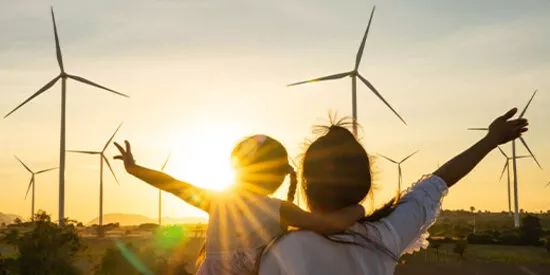
Step by step: how to build a viable hydrogen ecosystem
The world is betting on hydrogen. This simplest of elements is increasingly being regarded as a big part of the solution to global climate change. However the world is only at the start of a potential ‘hydrogen economy’ and Asia boasts some of the most interesting potential.
The world is betting on hydrogen. This simplest of elements is increasingly being regarded as a big part of the solution to global climate change. Industry analysts at Wood Mackenzie are tracking nearly 800 low-carbon hydrogen projects with more than 300 Gigawatts of projected electrolyzer capacity – a pipeline of projects that has tripled since the spring of 2021. The International Energy Agency, meanwhile, has almost 1,000 such projects in its own database and says there is still not enough investment to satisfy expected demand.
A lot of this enthusiasm is justified. Producing ‘green’ hydrogen through water electrolysis powered by renewable energy is a simple, proven technology that, most importantly, produces no carbon dioxide or other greenhouse gas emissions. As an alternative, ‘blue’ hydrogen, derived from natural gas but with 95% of the emissions captured at source, is also mostly CO2-free. And there are other clean and colorful variants, such as ‘turquoise’ hydrogen, which makes use of an established chemical process; and ‘pink’ hydrogen, where the electrolysis is powered by a nuclear reactor.
Once it has been produced, hydrogen is safe to use and transport, able to make use of a lot of existing natural gas infrastructure. It can help decarbonize so-called ‘hard-to-abate’ industrial processes like steel and chemicals production that require a lot of heat and are hard to electrify. There should also be, in time, applications in long-distance transport and even in domestic heating networks. Best of all, hydrogen can be used for long-term energy storage, making it an ideal complement to intermittent renewables in supplying the electricity grid – alongside batteries that can provide shorter term energy storage solutions.
Despite all of these advantages, we must remember that the world is only at the start of a potential ‘hydrogen economy’. Today’s production volumes of hydrogen are tiny; almost all of it is grey, in other words, produced using natural gas with the CO2 emitted into the atmosphere; and its use is mostly confined to the petrochemical industry.
What we need to scale clean hydrogen production and develop a proper ecosystem (that also covers transport, storage and end markets) are primarily two things. First, government incentives. These can come either in the form of carrots: such as subsidies to help reduce the price of green hydrogen from around $5-10 per kilogram now to the $2/kg that would see production volumes increase dramatically; or as sticks: for example, binding requirements for hydrogen use, such as a certain percentage needing to be blended into domestic gas heating systems. The $3/kg subsidy built into the Inflation Reduction Act just passed in the US, is a good example of the former.
The second important element is for end users to be prepared to pay a premium to use hydrogen (and its close cousin, ammonia) until prices decline to the point where they are competitive, and the free market can kick in. Again, this can be encouraged through public policy. But it will take time for all of this to be put into place.
Most in the industry, however, are confident it will happen. This explains the steady drumbeat of new projects and the fact that off-takers (end users) are willing to sign multi-year agreements to take the output of a particular development. That, in turn, gives comfort to investors and banks to support a project with the necessary loans and equity financing.
The main area of discovery now underway in the industry is at what price and for how long and on what terms will hydrogen buyers commit. We have built economic and financial models for hydrogen projects which can calculate the required prices. Our analysis shows that low electricity input prices are a key driver of hydrogen prices. This means countries who can produce the lowest cost electricity will have a natural advantage as the hydrogen suppliers of the future.
Our role at Societe Generale is both as a traditional project finance house, advising on the capital structure, raising and lending the debt for new projects; and, increasingly, as a commercial adviser, where we introduce developers and off-takers to each other, bring in due diligence experts and often start helping the client a year or more before any financing takes place.
While the hydrogen phenomenon is a global one, Asia boasts some of the most interesting potential: Australia is likely to be one of the world’s biggest – perhaps even the leading – producer of green hydrogen and green ammonia given its vast quantities of land, sun and wind. India is a very low-cost electricity producer, and with a long history of ammonia production means it could also become a hydrogen and green ammonia champion of the future. Japan, South Korea and South-East Asia will become large consumers of hydrogen and ammonia, with a lot of infrastructure already in place – Japan has 38 LNG terminals, by far the most in the world. Their shipbuilders are also working on a variety of dedicated hydrogen and ammonia carriers, while Singapore is planning a regional pipeline network with Malaysia and Indonesia.
There will be disappointments as projects and developers are narrowed out over the next few years. Not everyone has the risk capital and management capacity to survive. But this is ultimately a healthy process and we are confident that the end result will be a sound and economically viable hydrogen sector that can contribute meaningfully to our planet reaching net zero emissions.

日本のエネルギー・トランジションに向けて「東」と「西」を結ぶ
昨年ソシエテ・ジェネラルがグローバルロードショーの一環として開催した「ポジティブ・インパクト・デー」の東京会場では、日本の脱炭素化政策と国際的なパートナーとしての役割について、最新の動向を踏まえた活発な議論がなされました。

2024年第4四半期および2024年通期決算
パリ、2025年2月6日





